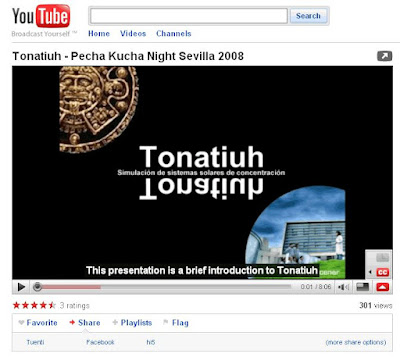Currently, Tonatiuh can be used to simulate only reflective solar concentrating systems. Fortunately, this suffices to simulate most of the solar concentrating systems used by the CSP industry nowadays.
The collection of plug-in surfaces developed so far, allow the modeling of a large variety of solar concentrating geometries, e.g. static CPC’s, one-axis tracking parabolic troughs, two-axis tracking parabolic troughs and heliostats. Furthermore, the complexity of the concentrating systems to be modeled can be as large as desired.
The only sunshape plug-in developed so far is a pillbox sunshape. Two types of sunlight emitting surfaces can be used in conjunction to the pill box sunshape: a flat square, and a flat disk.
Possible atmospheric interactions with the light bouncing within the system (e.g. absorption and scattering) are not modeled yet. For large systems, in which the mean free-path of photons before reaching their target are of the order of few hundreds of meters, this could be a non-negligible source of error. However, for small size solar concentrating systems this error is not relevant.
The plug-in and library based architecture of the program allows for easy modification and maintenance. This architecture will make it possible to easily increase Tonatiuh’s functionality in order to overcome the limitations referred above, and to further increase the value of the program to their users.

